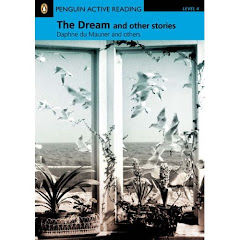Title: Author:
About the Author
Look up your author on the net and write a short description about him (include age, education, place of birth, place of residence, things that affected their lives or writing).
Other books the author has written:
The genre of his/her books is usually:
The audience his/her books write to is usually:
Does your author have a site? If so look through it and make a hyper-link to it.
Are there other sites with information about your author? Go through them and add hyper-links.
Look for pictures of his/her books and add them to your blog.
Brirtish mystery writer, who was also a lawyer and a judge in England. His knowledge on the law helped him in his stories.
Hare's most famous work is TRAGEDY AT LAW (1942), widely acclaimed as one of the great classics of detective novel. Hare's principal series characters were Ispector Mallet and a fellow barrister Francis Pettigrew, who first appeared in Tragedy at Law as an unhappy, near-defeated aging lawyer. In WITH A BARE BODKIN (1946) he meets Miss Eleanor Brown, a young woman half his age, and later has peaceful retirement in HE SHOULD HAVE DIED HEREAFTER (1958).
Cyril Hare was born in Mickleham, Surrey, as Alfred Alexander Gordon Clark. He studied at the New College, Oxford, and was called to the bar in 1924, fulfilling his part of the family tradition. At the bar Hare's practice was largely in the civil and criminal courts in and around London. During World War II Hare toured as a judge's marshal for some time. This experience formed the background for Tragedy at Law. In 1942 he started to work as Temporary Legal Assistant in the Director of Public Prosecutions Department. He then served with the Ministry of Economic Warfare. From 1950 he was County Court Judge in Surrey. Hare's work then concerned civil disputes only.
After some occasional sketches for Punch and other journals, Hare published his first mystery novel, TENANT FOR DEATH (1937). It dealt with the disappearance of a financier, who is the found dead in South Kensington. The well-received debut was followed by DEATH IS NO SPORTSMAN (1938), and SUICIDE EXPECTED (1939), which were good, solid mysteries, but did not drew to any great extent on his legal background. Hare's great interest in music is seen in WHEN THE WIND BLOWS (1949). Tragedy at Law was set in the legal world. In the story Mr Justice Barber, journeying from court to court, receives threatening notes and a mysterious stranger arranges nasty surprises for him, until on page 253 out of a total of 290, the dagger gets thrust between his shoulders. Pettigrew appears as an amateur detective, who doesn't have much pages between the murder and its solution.
In With a Bare Bodkin Hare returned to the atmosphere of WW II. The story is set in a remote part of Britain, Marsett Bay, where Francis Pettigrew and his civil service branch is sent to escape the Blitz. Hare keeps the pace slow, plays with the labyrinth of fiction within fiction, and murder doesn't occur until halfway through the book. Pettigrew falls in love with his secretary, Miss Brown, who is courted by a widowed man who much her senior. In AN ENGLISH MURDER (1951) Hare used the conventional setting-a country house-and the usual suspects-there is a butler-but managed to come out with an original and fresh tale. An English Christmas party is disturbed by a murder and a Czech refugee, Br. Bottwink, starts to help Scotland Yard. The book was made into a two-part television film in the Soviet Union under the title A Very English Murder (1975), directed by Samson Samsonov and produced by Mosfilm. Hare was not a prolific short story writer, but he nevertheless contributed stories to three CWA (the Crime Writers' Association) anthologies, Choise of Weapons (1958), edited by Michael Gilbert, Planned Departures (1958), edited by Elizabeth Ferrars, and Some Like Them Dead (1960), edited by Roy Vickers. 'Name of Smith' (1952), first published in the Evening Standard, illustarates Hare's ability to inject into his stories questions about truth and justice without being didactic. Based mostly on dialogue, it tells of a judge, "an old ruffian", whose soft side is revealed to his colleagues only after his death. The story was reperinted in Mysterious Pleasures (2003), celebrating the 50th anniversary of CWA.
Subscribe to:
Post Comments (Atom)

Hi Guy!
ReplyDeleteI don't think I really wanted you to just copy paste but write in your own words with a hyperlink to the site you copy-pasted from.
Hi Karen,
ReplyDeleteLook up in the blog, there is a hyperlink about Cyril Hare..
Cyril Hare Link.
I wanted to read a summary but I have seen a biography! What's that?!
ReplyDelete